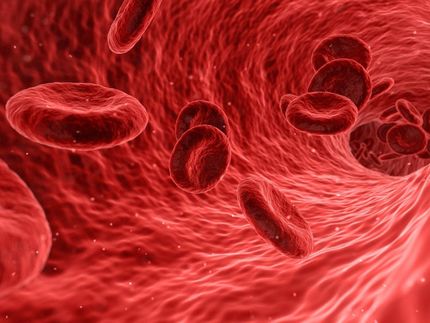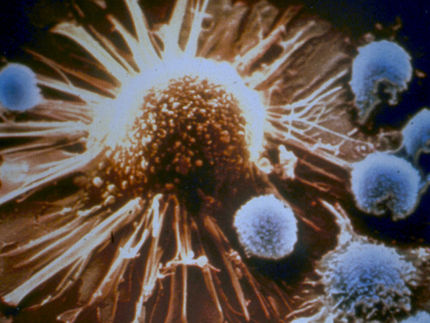Engineering Smart Delivery for Gene Editors
Restoring Vision: New hope for genetic diseases and cancer therapies
A research team from Helmholtz Munich and the Technical University of Munich has developed an advanced delivery system that transports gene-editing tools based on the CRISPR/Cas9 gene-editing system into living cells with significantly greater efficiency than before. Their technology, ENVLPE, uses engineered non-infectious virus-like particles to precisely correct defective genes – demonstrated successfully in living mouse models that are blind due to a mutation. This system also holds promise for advancing cancer therapy by enabling precise genetic manipulation of engineered immune cells making them more universally compatible and thus more accessible for a larger group of cancer patients.
Overcoming Delivery Challenges in Gene Editing
Modern genome editing techniques, including CRISPR systems, hold great potential for treating genetic diseases. However, delivering these molecular tools reliably to their target cells remains a significant challenge.
“Previous viral and non-viral delivery systems such as adeno-associated viruses (AAVs), lipid nanoparticles (LNPs), and other virus-like particles (VLPs), have been valuable but face limitations,” says Dr. Dong-Jiunn Jeffery Truong, last author of the study and group leader at the Institute for Synthetic Biomedicine at Helmholtz Munich. “Challenges include the increased persistence of gene editors potentially causing immune reactions, or simply their limited efficiency. ENVLPE directly addresses these issues while its modular design maintains compatibility with future gene-editing advancements.”
ENVLPE is based on modified, non-infectious virus-derived shells. These act as carriers for molecular gene editors such as base or prime editors – specialized CRISPR tools that can chemically change single DNA bases in the genome and remove or insert new DNA sequences. ENVLPE's design solves the logistics challenge of previous methods during the production of the VLPs by hijacking the intracellular transport mechanism so that all components come together at the right time and place.
Prior methods often included partially assembled, non-functional gene editors, reducing delivery effectiveness. “ENVLPE now not only ensures the packaging of fully assembled gene editors but also contains an extra molecular shield that protects the most vulnerable part of the editor from degradation during transport,” explains Truong. “This allows the genetic tools to be safely delivered into target cells where the intended DNA edit can take place.”
Restoring Vision: Gene Editing in Action
In close collaboration with a team led by Prof. Krzysztof Palczewski, a professor of ophthalmology at UC Irvine, the scientists tested the ENVLPE system in a mouse model of inherited blindness. “The mice carry a disabling mutation in the Rpe65 gene, which is essential for producing light-sensitive molecules in the retina, and therefore are fully blind and unresponsive to light,” explains Samuel W. Du, a co-author and MD/PhD candidate at UC Irvine. After injecting ENVLPE into the subretinal space (the area between the retinal pigment epithelium and photoreceptors) to correct the mutation, the animals began to respond to light stimuli again. “The extent of restoration was astounding,” says Julian Geilenkeuser, co-first author of the study and a doctoral researcher at the Institute for Synthetic Biomedicine. “It showed us that our particles have real therapeutic potential in a living animal.”
Compared to established systems, ENVLPE achieved significantly better results: a competing system required more than 10 times the dose to reach similar effects. “Our goal was to build a tool that is both useful for researchers and suitable for real-world applications,” says Niklas Armbrust, also co-first author and a doctoral researcher at the Institute for Synthetic Biomedicine. “We resolved critical bottlenecks and achieved a much more efficient packaging by the delivery agents.”
Advancing Cancer Therapy with Universal T Cells
ENVLPE could also open up new possibilities for adoptive T cell therapies, where immune cells taken from the patient are genetically modified in the lab so that they can specifically recognize and attack tumor cells. In collaboration with Dr. Andrea Schmidts’ laboratory at TUM University Hospital, ENVLPE facilitated the targeted removal of specific surface molecules that could trigger an immune response when the cells are administered to a recipient different from the donor. This could lead to the development of so-called “universal” T cells that do not need to be customized for individual patients, making treatments more accessible and cost-effective.
These innovations address critical challenges in both in vivo gene therapies for genetically inherited diseases and ex vivo cell therapies for cancer, paving the way for important translational advancements. “The highly modular ENVLPE system brings us substantially closer to on-demand and precise genetic modifications of complex cellular models,” says Prof. Gil Westmeyer, Director of the Institute for Synthetic Biomedicine and Professor for Neurobiological Engineering at TUM and co-senior author of the study. “It is an example of how synthetic biology can help drive medical innovation.”
Moving Toward Clinical Use
Having now achieved highly efficient delivery of the most common gene-editing tools, the team now seeks to use the diversity found in nature, along with the recent advancements in AI-assisted protein design, to increase targeting precision by restricting the delivery of these tools to specific cell or tissue types only. To move ENVLPE toward clinical application, the research team is pursuing follow-up funding from translational grants and partnerships in the pharmaceutical industry. The goal is to optimize the technology for various therapeutic applications and ultimately make it available to patients.
Original publication
Julian Geilenkeuser, Niklas Armbrust, Emily Steinmaßl, Samuel W. Du, Sebastian Schmidt, Eva Maria Hildegard Binder, Yuchun Li, Niklas Wilhelm Warsing, ... Andrea Schmidts, Arie Geerlof, Krzysztof Palczewski, Gil Gregor Westmeyer, Dong-Jiunn Jeffery Truong; "Engineered nucleocytosolic vehicles for loading of programmable editors"; Cell
Other news from the department science
Most read news
More news from our other portals
See the theme worlds for related content
Topic world Gene therapy
Genetic diseases once considered untreatable are now at the center of innovative therapeutic approaches. Research and development of gene therapies in biotech and pharma aim to directly correct or replace defective or missing genes to combat disease at the molecular level. This revolutionary approach promises not only to treat symptoms, but to eliminate the cause of the disease itself.

Topic world Gene therapy
Genetic diseases once considered untreatable are now at the center of innovative therapeutic approaches. Research and development of gene therapies in biotech and pharma aim to directly correct or replace defective or missing genes to combat disease at the molecular level. This revolutionary approach promises not only to treat symptoms, but to eliminate the cause of the disease itself.






















































